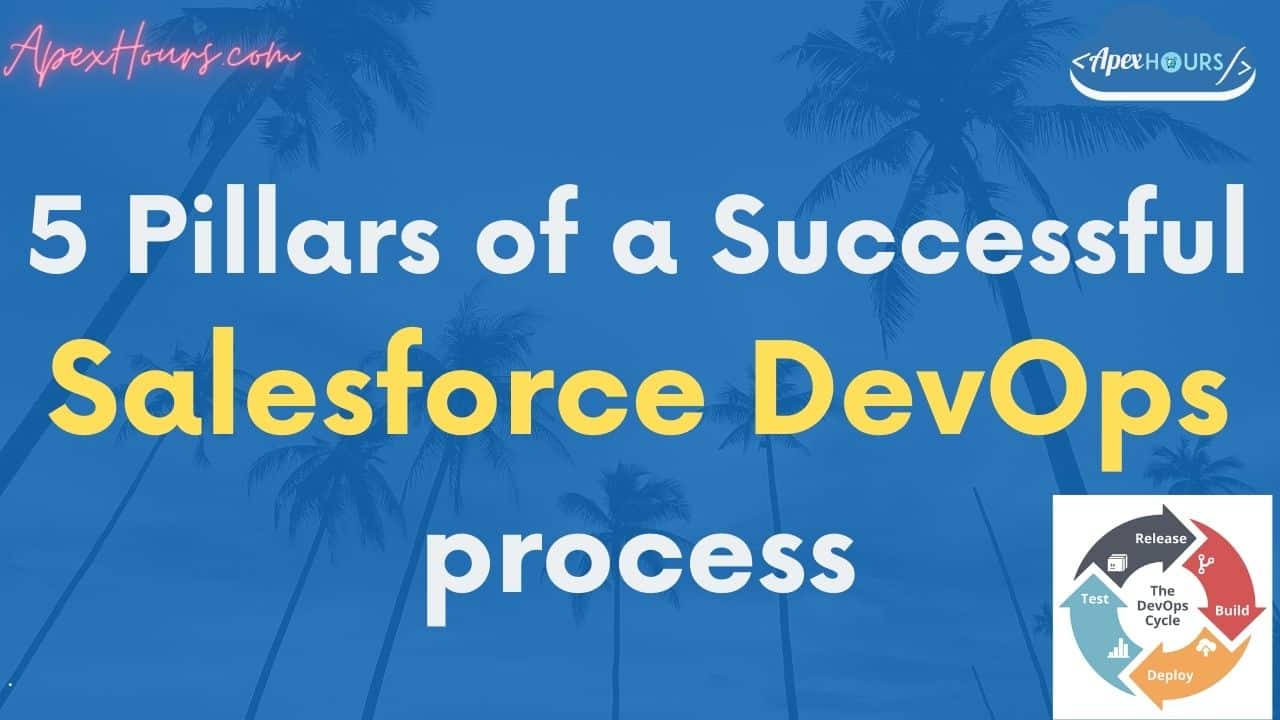In this session we will talk about the 5 Pillars of a successful Salesforce DevOps process and learn about what is DevOps?
What is DevOps?
DevOps allows the organization to develop and improve the product in a faster way than it can do with other software development approaches. Continuous integration (CI) is a DevOps software development best practice to detect problems and fix them before releasing changes to their customers.
DevOps = automated, more regular releases

DevOps = simply a better way of managing releases /deployments
Why is DevOps important
Google’s industry survey for 2019 showed that high-performing teams that have adopted. DevOps practices deploy 208 times more frequently and make changes 106 times faster than low performers.
- A higher frequency of new releases to production
- Fewer bugs and fewer service disruptions
- Faster restore times in the event of service outages
DevOps is a journey: start small
- Start with small steps
- Make sure the whole team is onboard and up to speed
- Layer on complexity when your team + process is ready
Pillars of a successful Salesforce DevOps process
Pillar 1: Version Control
Git-based source control = core pillar and starting point for most DevOps journey
Version control is the new single source of truth

How does version control benefit the whole team?
- Enable parallel development streams, safely, with branching
- Manage code conflicts
- Maintain a full audit trail
- Deploy consistently across environments
- Reduce bugs through code review
- Simplify rollback
- Release faster and more reliably
Source-driven development
Master is the source of truth – no commits direct to master, all new features + fixes happen in feature branches
Feature branches merged back to master when ready for release -> deploy from master to UAT, prod.
Learn more about Useful Git commands.
Pillar 2: CI/CD
Not just for deploying changes

What is Salesforce DevOps? Check our Salesforce DevOps to learn more.
Pillar 3: Testing

Learn more about Salesforce Test Automation.
Pillar 4: Backup
Expect the unexpected
- Control your data
- Guarantee your business continuity
- Protect yourself from malicious attacks, Salesforce bugs, accidental deletions, etc.
Learn about Data Archiving and Backup Salesforce.
Pillar 5: Putting it all together
Common challenges
- I don’t have the knowledge
- I don’t know where to start
- I don’t know if I can get my team
- onboard
- My team is too small

5 Pillars of a successful Salesforce DevOps process Video
- DevOps and Salesforce – A love hate relationship
- The 5 Pillars of DevOps Success
- Building your Success Roadmap
Summary
I hope this post helped you to understand the Pillars of a successful Salesforce DevOps process.






1 more pillars was missing – the successful DevOps need monitoring (Monitoring Tools) after backup before putting it all together.
Great point you added Amir